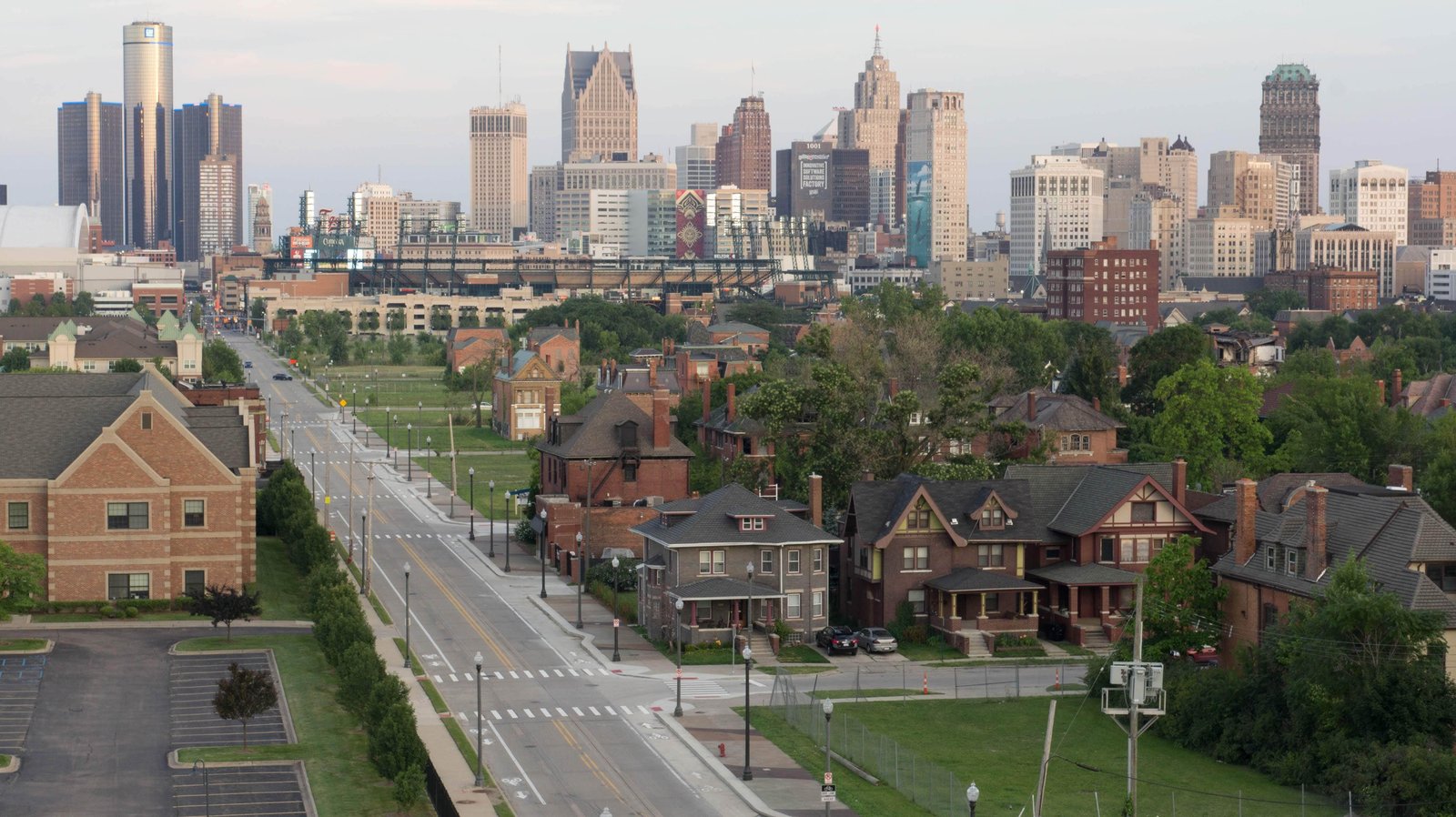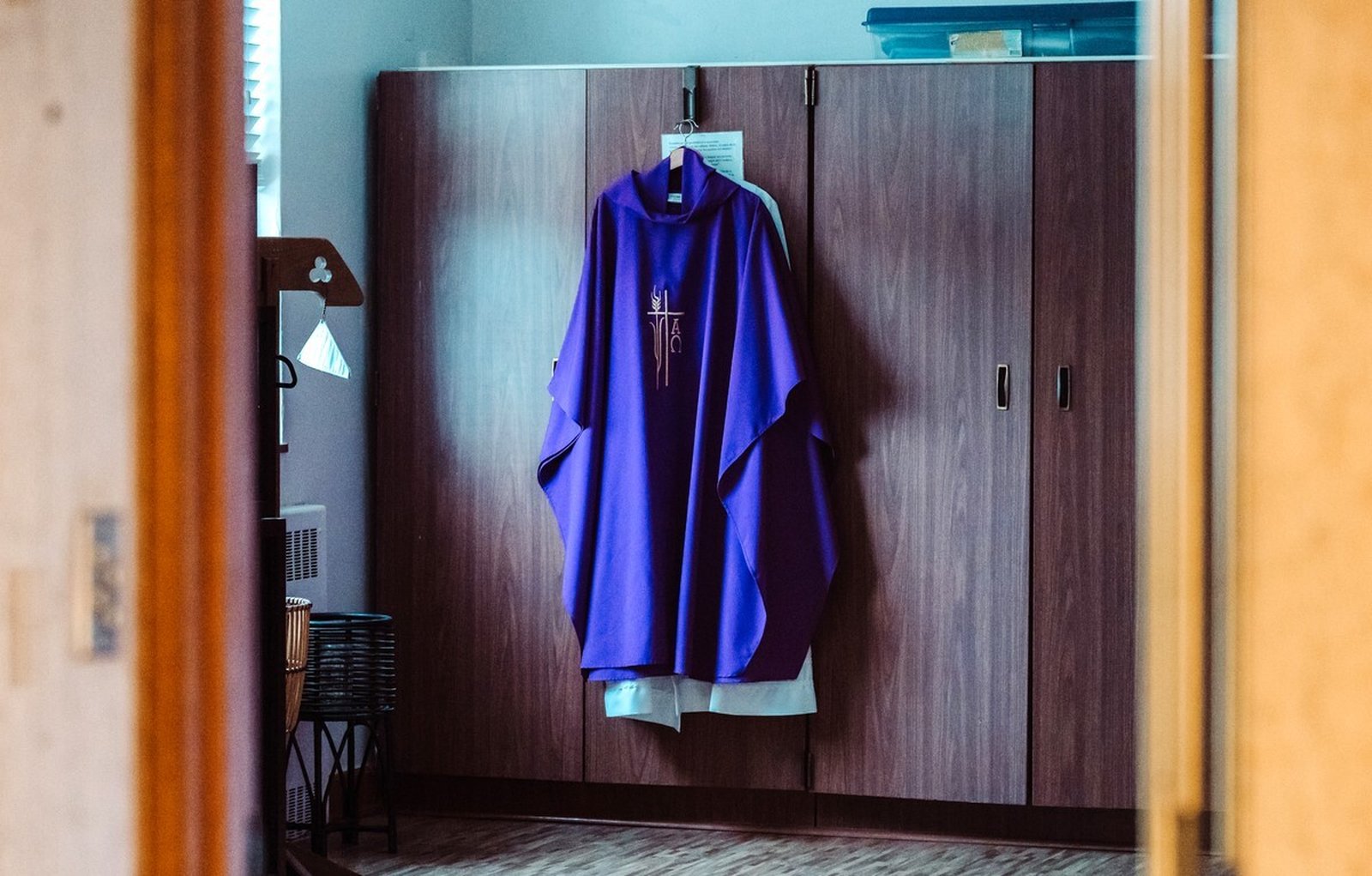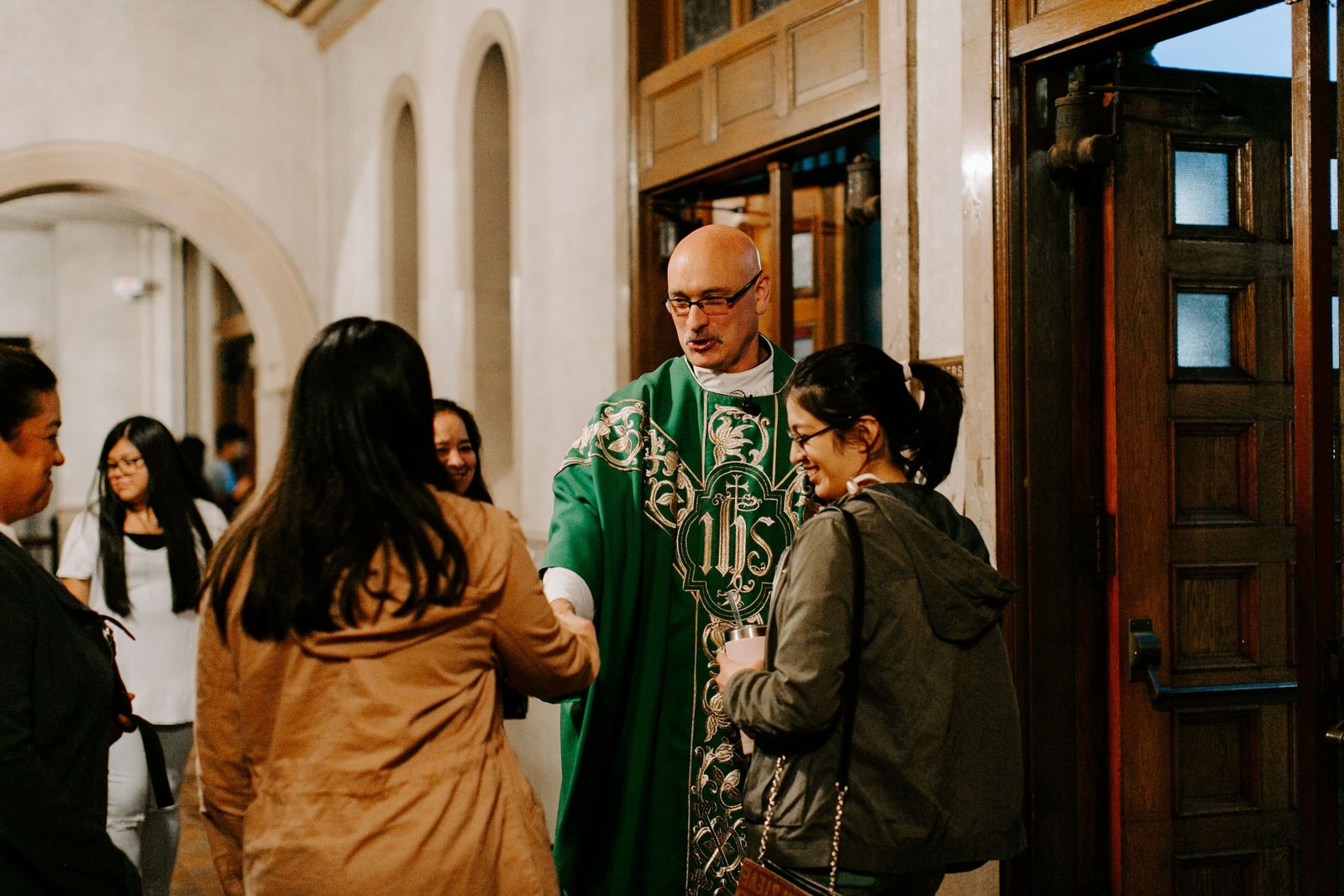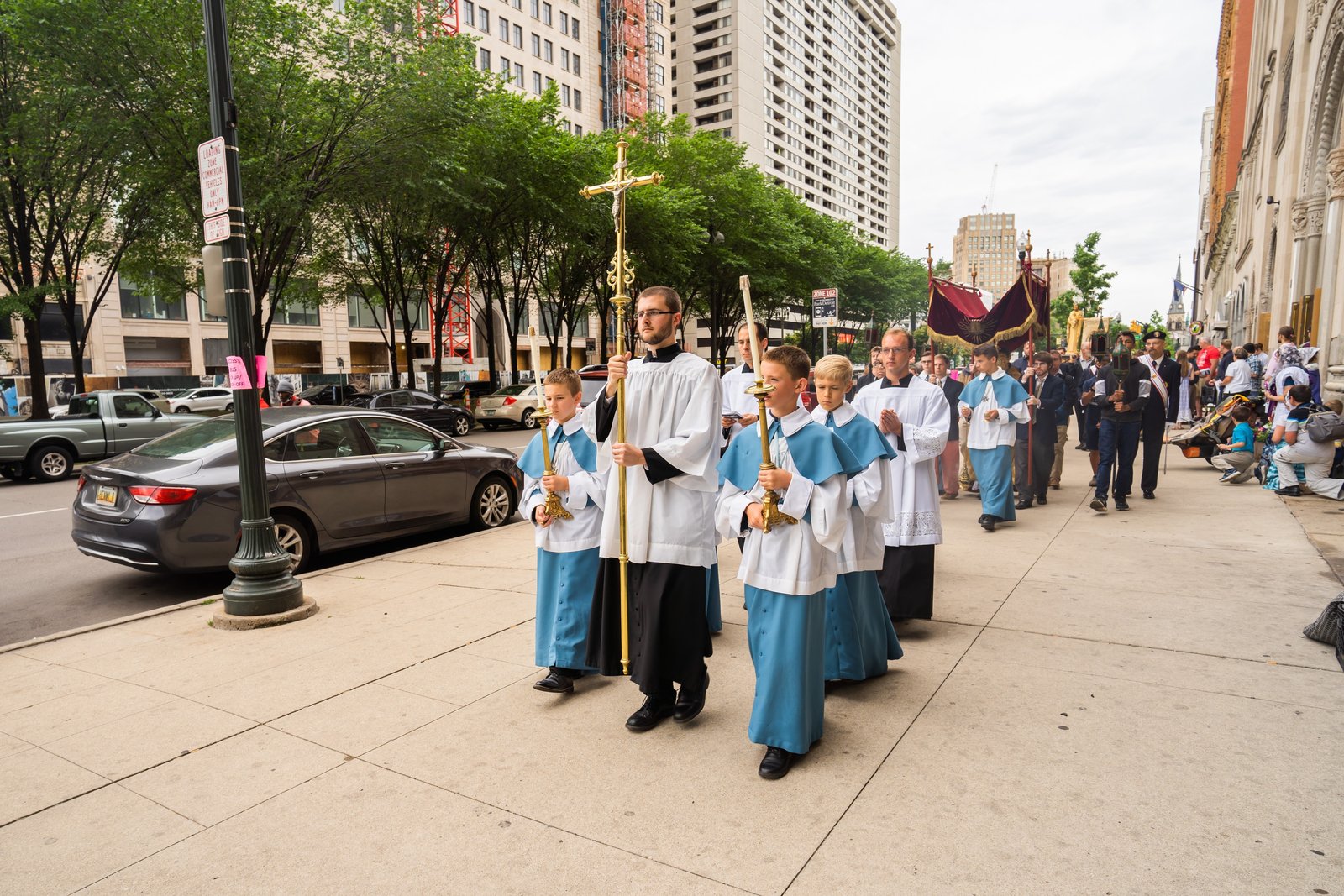Archdiocese of Detroit will undergo a multi-year process of renewal in order to 'adapt creatively' to a future with fewer resources
DETROIT — In a new pastoral note, Archbishop Allen H. Vigneron said the Church in the Archdiocese of Detroit will undergo a multi-year process of renewal to create “mission-ready Families of Parishes” prepared to meet the challenges of evangelization in the 21st century.
Archbishop Vigneron’s pastoral note, “No Second Tunic: A Plan for Mission-Ready Families of Parishes in the Archdiocese of Detroit,” released Feb. 6, invites the Church in southeast Michigan to step out in faith and go forward while acknowledging changes in the Church and society that have left the Church with fewer human and financial resources in recent years.
“Throughout history, the Church has continually responded to societal changes with apostolic boldness and faithfulness, leaving behind the ‘second tunic’ — anything that did not directly serve the mission — and adapting her methods without compromising her timeless message,” Archbishop Vigneron wrote. “Like Abraham, we are people of faith, called to journey forward, guided by God’s grace, into the ‘new land’ of mission and evangelization.”
The title of the pastoral note comes from Matthew 10:7-10, in which Jesus instructs his disciples to proclaim the kingdom of God throughout the land, going forward with nothing but their faith — no “gold or silver or copper for your belts; no sack for the journey, or a second tunic, or sandals, or walking stick.”
Church history can be divided into two significant eras, the archbishop noted: the Apostolic Age, in which the apostles and early Church fathers had few structures or resources, but flourished and grew the faith through their heroic witness to Christ, and the Christendom Age, during which the Church became a dominant cultural force and grew in influence, undergirding the social order in most of western society.

“Today, we face a cultural landscape that, in many ways, more closely resembles the Apostolic Age than Christendom,” Archbishop Vigneron wrote, referencing Pope Francis’ dream of a “missionary impulse” in today’s Church. “While our times are markedly different from those of the first Christians, we share with them this significant reality: we, too, face the need to adapt creatively with fewer financial and human resources.”
Addressing both clergy and the lay faithful in the Archdiocese of Detroit, Archbishop Vigneron said the Church must acknowledge the steep decline in both priests and practicing Catholics — trends not unique to the Archdiocese of Detroit — and respond as Jesus would: by focusing not on infrastructure and preservation, but on faithfulness.
Very soon, the archbishop said, the Archdiocese of Detroit is projected to have fewer active priests than parishes, a trend that “places extra burdens on the priests caring for these communities” and is likely to be exacerbated in the years ahead.
In addition, many parishes are caring for aging church buildings that require extensive and ongoing maintenance, causing a strain on financial resources that might otherwise be used for the mission of saving souls, the archbishop said.
“Parish life in the Archdiocese of Detroit has rapidly changed over the last several decades, with fewer people in the pews, a declining number of priests, and a surplus of aging church buildings without the financial resources to properly care for them,” Archbishop Vigneron said. “In response to this reality, our parishes must decrease their physical footprint while expanding their spiritual presence. We are called to proclaim Christ crucified, celebrate the sacraments, and serve as witnesses of God’s enduring love — just as our ancestors did — with renewed focus and methods.”
In order to ensure both parishes and priests are healthy and ready for mission, Families of Parishes will work to align their resources in the years ahead in order to “prioritize the Apostolic work of the Church,” the archbishop said.
This is not the beginning of a new process, he said, but a continuation of the mission entrusted to the local Church by the Holy Spirit during Synod 16 and the next step in the archdiocese's transition to Families of Parishes.

“This focus on missionary conversion — and our adoption of Families of Parishes — is a living reality, not a box to check and discard,” he wrote. “As we give thanks to God for the progress we have made, we also remain focused on what is next in our effort to renew our structures so that they are Spirit-led and radically oriented toward mission for generations to come.”
‘Mission-ready Families of Parishes’
According to statistics included in an appendix to the pastoral note, the archdiocese is expected to have just 134 active priests in parish ministry by 2034 — down from approximately 224 today. Today, almost 70% of the archdiocese’s active priests are 50 or older, with the average age projected to steadily increase as current priests get older and fewer new priests replace them.
The added strain on these priests to care for the archdiocese’s 213 parishes and 81 schools will quickly become unsustainable if nothing is done, the archbishop wrote.
“Our attention to renewal is twofold: on the health of our priests and the health of our parish communities, both of which are essential to ensuring that our efforts are not simply sustained but are fully focused on advancing our mission to proclaim the Gospel and build up God’s Kingdom,” Archbishop Vigneron said.
At the same time, Families of Parishes grappling with a decline in sacramental participation and increasing maintenance needs may struggle to devote enough resources to the urgent needs of evangelization in their communities, he said.
In order to support flourishing parishes and priests, the Church must prayerfully and honestly discern what must be done to navigate these challenges, he said.
“In aligning our resources for mission and taking care to support our priests in their ministry, we will also continue to build up parish communities that are fully alive and growing, with a clear sense of their mission to form new ‘joy-filled’ disciples of Jesus Christ,” Archbishop Vigneron said. “These parish communities prioritize a culture and vibrancy that attracts the disaffiliated, youth, and young adults, while continuing to equip established parishioners with the joy of the Gospel.”
Catholic schools are a key part of this mission, the archbishop added, and “the way in which each Family of Parishes serves its school communities is an essential planning component.”
To support this need for renewal and realignment, Archbishop Vigneron announced the creation of the archdiocesan Department of Parish Renewal, which will serve as a “dedicated resource to support our parishes and Families of Parishes in keeping their structures aligned with the mission.”

This new department will focus on four key areas, the archbishop said: communicating, facilitating, accompanying and implementing the vision of mission alignment.
“For Families of Parishes to be mission-ready, they must effectively define their challenges and prayerfully discern how to meet these challenges collaboratively,” the archbishop said. “The Department of Parish Renewal will be a listening office, ensuring transparency by helping to direct all communications between Archdiocesan staff and Families of Parishes related to this renewal effort.”
Such communication and collaboration will involve a clear definition of the need for mission alignment, including metrics, timelines and the use of printed materials, digital resources and on-site consultations to assist in the process, he said.
Curia leaders will work closely with clergy, parish staff, pastoral councils and finance teams of each Family of Parishes to facilitate “honest and spirit-led discernment about a future with fewer priests and, often, fewer people,” he said.
If, during this process, a need to merge or close churches is discerned, the Department of Parish Renewal will accompany clergy and faithful through such decisions, the archbishop added.
“The team will remain attentive to the emotional and spiritual impact of these transitions, including any parish community mergers or church building closures, by offering guidance and support to help parish communities grieve, begin to heal, and embrace this opportunity to make God’s presence more visible and active in their midst,” Archbishop Vigneron said.
During the transition process, this team will ensure changes are “carried out with great care, ensuring that all steps have been thoughtfully communicated and facilitated,” he said. “The goal is to create an environment where these changes can take root effectively, fostering growth in faith and mission.”
According to a series of frequently asked questions released alongside Archbishop Vigneron’s pastoral note, discernment and decisions regarding parish alignment will be “informed by a thorough study of the data unique to each parish, including but not limited to parish demographics, age/availability of clergy, health/age of buildings” and other factors, but the process will not be “purely data driven,” taking into account “other qualitative measures of parish life” as each Family of Parishes discerns how best to align its limited resources.
Timeline for mission-alignment
The process of parish renewal and mission alignment in the Archdiocese of Detroit will take place over a period of several years and will be facilitated region by region, Archbishop Vigneron said.
This timeline — similar to other dioceses that have undergone renewal processes — will allow for a “thoughtful and collaborative process” rooted in prayer and discernment, he said.
The work begins with the Central Region — which has already started a process of discernment and includes the cities of Detroit, Hamtramck and Highland Park — from March to June 2025, followed by the South Region from July to December 2025, the Northwest Region from January to June 2026, and the Northeast Region from April to September 2026.
The alignment will continue to take place within the structure of Families of Parishes, which will serve as a framework for discussions and discernment, Archbishop Vigneron said. Through the process, it is possible that some Families of Parishes groupings and clergy assignments may change, he said.

“Based on our current data and projections, a reduction in parochial footprints is necessary, as each Family of Parishes, with assistance from the Department of Parish Renewal, discerns how best to leverage its resources for the mission going forward,” the archbishop said.
One thing that will not change, however, is the commitment of the local Church to caring for the spiritual and corporal needs of the people of God and the communities in southeast Michigan, he said.
“As we move forward in this process, we draw strength from the assurance that God is with us. This work is not merely organizational, but deeply spiritual—an opportunity to renew our trust in the Holy Spirit, as the Apostles experienced on Pentecost when the Twelve were filled with the fire and courage of the Holy Spirit to leave the upper room and share the Good News,” Archbishop Vigneron wrote.
“Although some of the outward appearances of parish life will evolve — as they have done throughout the history of the Church — the essential elements of parish life will remain the same: We will continue to offer the Holy Sacrifice of the Mass, celebrate the Sacraments of Healing and Initiation, nurture our shared call to holiness — especially by supporting vocations to the priesthood, consecrated life, and marriage — help our children in Catholic schools and religious education to flourish and know Jesus, engage those on the margins, and foster a loving community rooted in the faith that once sustained our ancestors and now sustains us,” Archbishop Vigneron said.
The archbishop offered words of encouragement to priests of the archdiocese, who, like the apostles, he said, “are called to proclaim the Gospel with boldness, trusting not in earthly resources but in the power of the Holy Spirit.”
“We need to renew our support for one another and draw strength from the fraternity we share in the priesthood. Be assured that the Lord walks with you and will provide all you need to fulfill your mission,” he said. “This work I am sharing with you today will bring its own challenges, but I am confident that the grace each of us received at our ordination, our share of that same Spirit that came upon the Apostles at Pentecost, will sustain us in the months ahead.”
Likewise, Archbishop Vigneron asked the faithful of the Archdiocese of Detroit to remain rooted in the love of the Holy Spirit and to trust in God’s providence, which never fails the Church.
“We are a people of hope, guided by the Spirit who renews all things. The Holy Spirit has been sent to us by the Father and the Son to lead and sustain us. We trust that He will guide us, as He has throughout salvation history, into the fruitful future God has prepared for His Church,” he said.
“Let us go forward together, with courage and faith, into this New Apostolic Age. Christ is risen. He is with us still. We have nothing to fear.”
Read ‘No Second Tunic’
Read Archbishop Vigneron’s pastoral note, “No Second Tunic: A Plan for Mission-Ready Parishes in the Archdiocese of Detroit,” about the process of missionary alignment that will take place over the next several years in the local Church, along with an appendix detailing relevant statistics and metrics.
Frequently Asked Questions
Along with the archbishop’s letter, the Archdiocese of Detroit released a “Frequently Asked Questions” document to address common concerns and questions.










